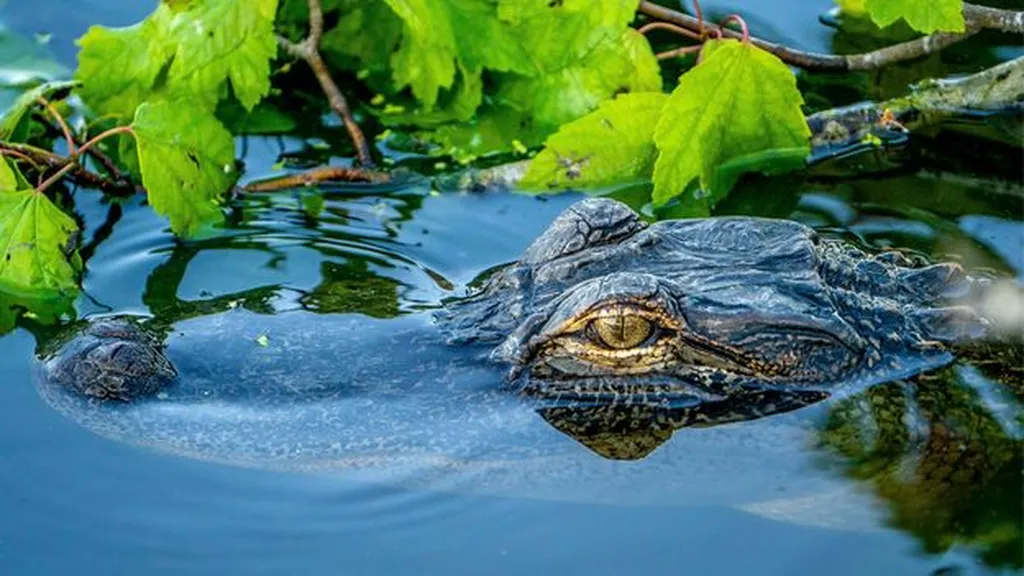In the heart of the Everglades, a silent sentinel of ecological change is the American alligator. A recent study published in the open-access journal “PLoS ONE,” translated from its original title as “Isotopic niche plasticity of American alligators within the southern Everglades,” sheds light on how these ancient reptiles are adapting to the shifting hydrological landscape. The research, led by Mathew J. Denton, explores the intricate relationship between alligator body condition, their isotopic niches, and the dynamic water management practices in the Everglades.
The Everglades, often referred to as the “River of Grass,” has undergone significant hydrological alterations due to human intervention. These changes have led to habitat degradation, reduced prey availability, and increased physiological stress on wildlife, including the American alligator. Denton and his team set out to understand how these changes have influenced the alligators’ isotopic niches—essentially, the range of stable carbon and nitrogen isotopes found in their tissues, which reflect their diet and habitat use.
The study revealed that alligators in estuarine environments had larger isotopic niches compared to those in freshwater habitats. This was primarily driven by a wider range of stable carbon isotope ratios, indicating a more diverse diet or habitat use. “The spatial variability in model predictability was higher at the smaller scale, reflecting the variability in basal sources and biochemistry among capture sites,” Denton noted. This finding underscores the importance of local ecological conditions in shaping the alligators’ isotopic niches.
The research also highlighted differences between male and female alligators. Males tended to have larger niches, driven by a wider range of δ13C values, suggesting that they utilize habitats and resources differently than females. However, both sexes foraged within the same trophic level, as indicated by similar ranges of δ15N values. Additionally, larger alligators often had larger niches with elevated δ15N values compared to medium-sized alligators, although this difference was not statistically significant.
One of the most intriguing findings was the temporal variability in the alligators’ isotopic niches. Despite utilizing similar stable carbon and nitrogen isotope pools over time, the alligators’ niches varied considerably, likely influenced by seasonal hydrologic fluctuations. “Their niches often being larger in the spring captures than the fall captures,” Denton observed. This temporal variability has important implications for understanding how alligators adapt to changing environmental conditions.
The study also found that alligators’ body condition estimates were correlated with intraspecific niche characteristics, including the mean centroid distance between sexes and the interaction between male and female niche size and overlap. These findings suggest that the variability in intraspecific niche dynamics, landscape heterogeneity, and dynamic hydrology are crucial considerations for designing sustainable management strategies to conserve and enhance alligator populations within the Everglades landscape.
For the energy sector, this research underscores the importance of understanding the ecological impacts of hydrological alterations. As water management practices continue to evolve, it is crucial to consider their effects on wildlife and the broader ecosystem. The findings of this study can inform more sustainable water management strategies that balance human needs with the preservation of vital ecosystems.
Moreover, the study highlights the need for long-term monitoring and adaptive management practices. As Denton and his team continue to unravel the complexities of the Everglades ecosystem, their work serves as a reminder of the intricate connections between water, wildlife, and human activities. By integrating ecological insights into energy and water management decisions, we can strive towards a more sustainable future for all.
In the words of Mathew J. Denton, “The variability in intraspecific niche dynamics, landscape heterogeneity, and dynamic hydrology are considerations for designing sustainable management strategies to conserve and enhance alligator populations within the Everglades landscape.” This research not only advances our understanding of alligator ecology but also provides valuable insights for the energy sector, emphasizing the need for holistic and adaptive approaches to water management.

